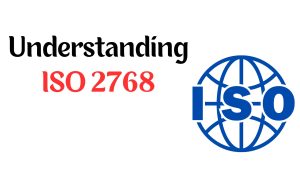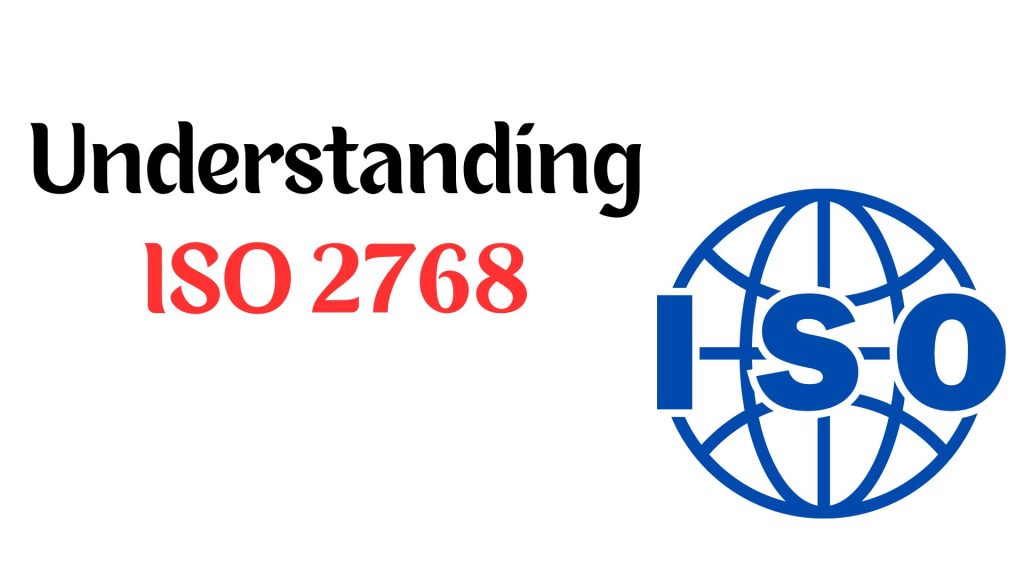Manufacturing processes are critical to meeting the demand for various consumer goods. Evolving technology and computing are rapidly changing the manufacturing scene. Manufacturers and industry professionals often ask about the various processes available to them. This article will have an in-depth discussion on ‘what is manufacturing process’. You will learn about the basics of manufacturing, the different types of manufacturing processes, strategies, and much more useful information.
What is manufacturing?
Manufacturing is the process of transforming raw materials or components into finished goods through various equipment, methods, techniques and processing.
The goods may be for either consumer or industrial use. Manufacturing processes use many different types of tools and machinery to accomplish the purpose. It is usually done in several stages, starting with raw material sheets or blocks.
Example of Manufacturing Processes
Everything around you is the result of a manufacturing process. For example, smartphones are manufactured on a large production line. Each part of the smartphone is the result of a separate manufacturing process. The screen is made in a separate factory. The motherboard it uses is the result of semiconductor manufacturing processes. The body is the result of CNC machining.
History of manufacturing
The evolution of manufacturing processes goes hand in hand with the evolution of civilization. Over time, additional materials were used in manufacturing processes. Copper, bronze and iron became the standard materials for use in tools, pottery, weapons and other products. Manufacturing methods evolved with the increase in possible materials.
The most rapid growth in manufacturing processes occurred during the Industrial Revolution. Processes traditionally done by hand were transferred to machines. Technologies such as steam power and electricity further fueled the drive for manufacturing innovation.
The development of computers led to the emergence of computer numerical control (CNC) technology. It added the element of automation to the manufacturing industry. Modern manufacturing companies use advanced machinery with highly automated operations for mass production.

What are the different types of manufacturing processes?
Manufacturing processes can be classified into three types of classes. These classes are
Make to Stock (MTS)
Make to Stock (MTS) is one of the traditional manufacturing techniques. In MTS manufacturing, products are manufactured in anticipation of potential demand. The manufactured products are then stored in inventory.
In the Make to Stock (MTS) strategy, manufacturers can use past sales to estimate production volume. Estimates can also be based on market research. Customers receive the product immediately when they want it. This is why make-to-stock has been the manufacturing technique of choice in the past.
Advantages of Make to Stock
Make to Stock offers the advantage of the shortest lead time. The products are ready before the customer needs them. Therefore, customers don’t have to wait for the product at all.
Disadvantages of Make to Stock
A major disadvantage of Make to Stock is the high upfront cost. A large investment is required to produce large quantities in advance. In addition, there is the risk of unsold products. This brings in the idea of losses.
The application
The apparel industry is a good example of a manufacturing business that uses the MTS method. Brands produce clothing in large quantities to meet customer demand. When products go unsold, stores offer discounts to get new orders on the shelf.
Make to Order (MTO)
In make-to-order (MTO) manufacturing, production begins as soon as the customer places the order. This eliminates the shortcomings of the make-to-stock method. There are no large upfront production costs and no risk of unsold product.
Advantages
The manufacturing company does not need a large inventory of products in the make-to-order model. Products are immediately shipped after manufacturing. This saves on inventory management costs. However, an inventory of parts required for manufacturing is still required.
Disadvantages
A major drawback of the make-to-order model is the long lead time. Production begins as soon as customer demand is received. Therefore, the customer has to wait for the product. However, it has the advantage of incorporating customer feedback into the production phase.
Applications
A major application of make-to-order is the production of defense equipment. Production starts as soon as the customer places the order. This allows the manufacturer to respond to customer requirements. In addition, there is no risk of products becoming obsolete.
Make to Assemble (MTA)
In the Make to Assemble (MTA) model, the sub-parts of a product are manufactured in advance. However, the assembly of the product takes place after the customer orders the product. It is also known as Assemble to Configure (ATC) or Configure to Order (CTO).
Advantages
Make-to-Order combines some of the advantages of Make-to-Supply and Make-to-Order. Because the components are manufactured in advance, the wait time for customer orders is relatively short. In addition, the product can be customized to meet specific customer needs. The customer can customize the product according to his preferences.
Disadvantages
Make to Assemble also has some of the disadvantages of the previous two manufacturing models. Pre-manufacturing of components requires a huge initial investment. Also, assembly is done after the customer orders the product. Therefore, there is still some waiting time involved.
Application example
A good example of make-to-assemble services is the laptop manufacturing model. Manufacturers store an inventory of component parts such as memory, body, storage, screen, and many other things. The parts are then assembled in many different ways to meet the needs of different customers.
What are the different manufacturing processes?
Many different types of manufacturing processes are available to achieve different results. Some of these manufacturing processes include
Forming
Forming processes change the shape of the material without cutting it. This process relies on the plastic deformation of materials. It has a limited range of applicable materials. This is because not all materials have plastic deformation properties. For example, if you try to bend glass, it will break.
Forming has low manufacturing costs and negligible material waste. Forming is commonly used to make metal products. However, it cannot create unique features or internal geometries in products.
Common examples of forming manufacturing processes include
·Forging
·Extrusion
·Thread Rolling
·Bending
·Stamping
·Rolling
Application of Forming
Forming is applied to a wide range of metal and alloy products. Common examples of forming include
·Pipes
·Turbine Rings
·Metal Plates
·Sheets
·Automobile Frames
Casting
Casting involves melting the material and pouring it into a mold of the desired product. When the material cools, the final part is formed. The casting process can produce shapes of varying complexity. Casting is one of the oldest manufacturing processes, originally used to make metal coins and sculptures.
Casting is one of the less expensive manufacturing methods. However, it only works for materials that can be melted and molded into the desired shape. Therefore, it is mainly used for metals and some plastics.
Common applications of casting manufacturing processes are
·Mining Equipment
·Automotive Industry
·Defense parts
·Art and sculpture projects
·Household Fittings
Joining
The joining manufacturing process is used to fuse two different parts together. It is used in the manufacture of complex products. Direct manufacturing of a complex product may not be feasible at times. Therefore, production is divided into manufacturing several simple parts and then joining them together.
Joining can reduce the production costs associated with manufacturing complex parts. There are times when joining is the only feasible way to manufacture a product. Joining also provides the advantage of replacing a portion of the product in the event of a failure rather than replacing the entire product. Some examples of joining processes include
·Soldering
·Brazing
·Nut fasteners
·Knuckle Joints
·Adhesive bonding
·Resin bonding
·Knuckle joint
·Cotter joint
Most consumer products are formed by joining manufacturing processes. For example, electronic products use joining to fuse together countless smaller components. Examples of joining manufacturing processes include
·Electronics appliances
·Aircraft
·Automobiles
·Smartphones
·Furniture
Molding
Molding is similar to casting. In molding, the molten material is poured into a negative mold of the final product. The negative mold is called the die. While casting is mostly metal, molding is used to make plastic parts.
Molding requires a high initial cost to make the molds. The lead time for production is also long. However, once the molds are made, the process is suitable for mass production. The molds can be reused, which reduces production costs.
Some common types of molding processes are
·Injection molding
·Compression molding
·Extrusion molding
·Transfer molding
·Thermoforming
·Reaction molding
·Crown molding
Molding has a wide range of applications in consumer products, such as
·Packaging food products
·Medical parts
·Automotive industrial
Additive Manufacturing
The additive manufacturing process creates a product by adding material layer by layer. The material is deposited by the application of heat. The layering process is typically controlled by automated software programming.
The additive manufacturing process works with materials that can be molded by heat. These include metals and certain plastics. Additive manufacturing processes have a high degree of customization. Lead times for these processes are short. However, the manufacturing time can be longer.
The different types of additive manufacturing processes are
·3D Printing
·Directed Energy deposition
·Binder Jetting
·Material Extrusion
·Sheet Lamination
·Powder Bed fusion
·Vat Polymerization
The additive manufacturing process has many applications in the manufacturing industry. Some of these applications include
·Jewelry Manufacturing
·Medical implants
·Special machine gears
·Automobiles component parts
·Robots
Subtractive Manufacturing
Subtractive manufacturing is the process of creating parts by the controlled removal of material. Subtractive manufacturing is also called machining. It is the most versatile process, working on any type of material.
Machining is controlled by computer numerical control (CNC) technology. It provides automated tool movement along with high speed and precision. Subtractive manufacturing is the dominant technology for most manufacturing industries. Most job shops use machining technology.
Some common subtractive manufacturing processes include
·Milling
·Reaming
·Drilling
·Turning
·Boring
·Electrical EDM
·Waterjet Cutting
Different Types of Manufacturing Strategies and Approaches
There are many different ways to manufacture a part. These approaches have different requirements, applications and results. The various manufacturing strategies are
Repetitive Manufacturing
Repetitive manufacturing is the mass production of smaller parts that are later assembled. Repetitive manufacturing has a rigid assembly line for ultra-fast, high-volume production. There is no customization in this manufacturing technique to meet the production time frame.
The fast production speed requires raw materials to be stacked next to the production line. The production routing of repetitive manufacturing is not complex. Finished products are shipped in batches for later use as they are produced.
On-Demand Manufacturing
The on-demand manufacturing process relies heavily on customization. Production is done in small batches upon receipt of customer orders. Customers can specify the product specifications they need. This manufacturing model requires low initial investment. Customers often provide a portion of the payment up front.
On-demand manufacturing has the disadvantage of long lead times. An order goes into production only after customers place their order with requirements. Therefore, the production time of this process can be very long.
Custom manufacturing
Custom manufacturing is inextricably linked to specificity. This type of production focuses on unique customer specifications, often involving one-off or limited runs of a particular product. The customer dictates the exact parameters for the product, from design to functionality.
The initial investment is typically moderate, as production does not begin until an order is confirmed. Prepayment is usually part of the transaction process.
However, custom manufacturing is not without its challenges. Because it relies on individual orders, the lead time for each product can be long.
Manufacturing does not begin until an order is placed and detailed specifications are provided, which can result in significant delays in delivery time.
Assembly Line Manufacturing
Assembly line manufacturing uses the finished products from repetitive manufacturing. It is a faster manufacturing process because it only requires the assembly of various components.
Assembly lines were the driving force behind the Industrial Revolution. Most mass production industries use the assembly line model. After products are created in the assembly plant, they are shipped to customers. There is usually no post-processing required after the assembly stage.
Discrete Manufacturing
Discrete manufacturing involves the production of identifiable products that are different from one another. It also tracks the raw materials that go into making a product. Any variations in the product can be made quickly. The automobile assembly line is a good example of discrete manufacturing. On the other hand, the production of cooking oil follows non-discrete manufacturing because each unit product is not distinct.
Job Shop Manufacturing
Job shop manufacturing involves production in a small shop area. There is no assembly line in this production. Job shop manufacturing applies to the production of low volume products. These products are usually custom orders based on customer requirements. This production model is common in the manufacture of machinery for other industries. It is also used to produce specialized niche parts for the aircraft and marine industries.
Mass Production
Mass production involves the manufacture of a standard product in very large quantities. This manufacturing model may use multiple processes and technologies to meet the production numbers. Modern mass production lines involve heavy use of automation and robotics. Due to the high level of automation, a mass production line has a dedicated quality control and inspection area.
Continuous Process Manufacturing
Continuous process manufacturing operates 24×7 with no interruptions in the manufacturing process. This manufacturing approach applies to flowable products. Common examples of continuous process manufacturing include oil refineries, gas plants, power generation, water treatment plants, etc.
The machinery used in continuous process manufacturing runs around the clock. The processes are all consistent with no variation. This process is the opposite of batch process manufacturing.
Batch process manufacturing
Batch process manufacturing involves the production of a limited number of items. Production stops after the production numbers are reached. Production is resumed after a pause. The number of products produced is usually based on the customer’s order.
The products in a batch are highly consistent. However, there may be variations between two different batches. The time between batches provides an opportunity for quality control and machine testing. It also allows for easier inventory management and utilization.
Lean Manufacturing
Lean manufacturing focuses on maximizing productivity and minimizing waste. Waste includes more than just unused materials. Waste includes any activity or product that the customer does not pay for. Lean manufacturing aims to eliminate these redundant products and processes. In doing so, lean manufacturing increases production quality while decreasing lead times.
Green Manufacturing
Green manufacturing is the production process that focuses on environmentally friendly processes and materials. The processes in green manufacturing produce minimal pollution. Materials are typically reusable. Most of the waste generated in a green manufacturing process is recycled.
It may take some investment to switch from conventional manufacturing to a green manufacturing option. However, green manufacturing processes can save money in the long run. In addition, more and more consumers are looking for green manufacturing alternatives.
Process Manufacturing
Process manufacturing involves a large production line based on a single recipe. The products produced by process manufacturing are indistinguishable. Therefore, process manufacturing can be thought of as the opposite of discrete manufacturing. For example, a butter manufacturing plant can be considered a process manufacturing industry. Similarly, juice production lines are part of process manufacturing.
Several process manufacturing industries can be combined to form a discrete manufacturing plant. For example, butter is a process manufacturing product. Similarly, the carton in which the butter is packaged is also process-manufactured. However, these two are combined to become discretely manufactured products.
Smart Manufacturing
Smart manufacturing is the use of computational intelligence in manufacturing. The smart manufacturing process is a great way to handle inventory management. Smart manufacturing can also adjust the production process to efficiently meet demand. Features such as intelligent simulation help predict problems on the assembly line before they occur.
Smart manufacturing techniques can be integrated with any other manufacturing method. This integration enables the manufacturing industry to reduce costs and increase productivity through data analytics. In addition, smart manufacturing techniques can eliminate bottlenecks in production systems.
What are the different manufacturing industries?
There are many different types of manufacturing industries. Each industry has its own specific setup and preferred manufacturing strategies. These different manufacturing industries are
Automotive Manufacturing
The automotive manufacturing industry is one of the largest in the world in terms of revenue. For instance, manufacturing industries like Toyota Motor Corporation is the second highest revenue manufacturing industry in the world.
The high demand and revenue of the sector allows automobile manufacturers to use the most innovative technologies and processes. Modern automobile manufacturing uses hybrid manufacturing models for exceptional quality control.
Aerospace Manufacturing
Aerospace manufacturing requires some of the most innovative manufacturing technology. The aerospace industry creates equipment that must withstand the harshest conditions. As a result, every part is based on custom specifications to meet the highest aerospace standards.
Defense Manufacturing Industry
The defense industry operates much like the aerospace industry. Defense parts require tough metal alloys and innovative materials to withstand field conditions. Defense manufacturers typically utilize an on-demand, highly customized manufacturing model.
Machinery Manufacturing Industry
Machinery manufacturers supply tools and equipment to other industries. These industries deal with custom orders to fulfill the customer’s manufacturing setup. This equipment is produced in very limited quantities. This eliminates the scenario of obsolete inventory due to evolving technologies.
Electronics Industry
Electronics manufacturers combine mass production methods with an assembly line setup. Smaller parts such as printed circuit boards, semiconductor devices, processors, displays, etc. are produced on a dedicated production line. The assembly takes place at a later stage at the manufacturer’s facility.
Food products
Food products are typically manufactured in a continuous process manufacturing setup. Large inventories of raw materials are kept in stock. The manufactured items are then assembled with the food packaging products. The finished items are issued in a batch process manufacturing setup.
Textiles
Textiles are typically produced on a large scale production line. The finished products are shipped to stores rather than held in inventory. Older products are often sold at a discount to make room for new inventory.
Chemical Processing and Manufacturing
The chemical processing industry converts raw materials into products such as bleach, oil, cosmetics, floor cleaners, etc. These industries generally operate in a process manufacturing environment. The finished chemicals are then packaged in special containers for later assembly. The process then incorporates the batch production method.
Pharmaceutical Industry
The pharmaceutical industry is one of the largest manufacturing industries. It produces medicines, vaccines, and other medical products. The pharmaceutical sector works similarly to the chemical processing plants. The products in the pharmaceutical sector are manufactured long before consumers demand them. There is a high risk of product obsolescence in this sector.
Construction Materials Manufacturing
The Construction Materials Manufacturing sector deals with the production and processing of concrete, lumber, bricks, and other raw materials. The manufacturing model of this sector is very diverse. It depends on the project, the consumer, and the order quantity.
Metal Fabrication
The Metal Fabrication sector deals with the processing of metal raw materials for use in secondary sectors. The Metal Fabrication sector serves the needs of the automotive, agricultural, industrial machinery, aerospace, and many other industries. Metal Fabrication can work in job shop manufacturing models or larger scale production lines.
Plastics Manufacturing
Plastics manufacturing companies typically use processes such as molding. Plastics are molded directly into the desired final shape. Plastics that can change shape with heat can work well with additive manufacturing technologies such as 3D printing.
Furniture Manufacturing
Furniture manufacturing industries have different production methods depending on the size of the industry. Smaller industries may use contract manufacturing and an on-demand manufacturing model. In this way, they can adjust the production volume according to the market demand. It also helps in inventory management.
Larger scale manufacturers can use batch production to have finished orders before market demand. However, the production volume is limited due to changing market trends and capital requirements.
Paper Manufacturing
The paper manufacturing industry produces a wide variety of products. Common output products of this industry are newspapers, notebooks, books, cardboard, decorations, and many other paper-based items. These facilities can use batch or process manufacturing equipment. The technology is usually simple due to less variation in the types of components.
Energy Sector
The energy sector produces fuels and fuel-based products. The oil and gas industry is a good example of this sector. These are produced in a process manufacturing facility. The energy sector uses complex and innovative machinery to withstand the harsh operating conditions.
Steps in the manufacturing process
In general, the manufacturing setup follows a similar sequence of events. These events are:
1. Envisioning the product
First, the manufacturer shortlists the product they want to make. This involves having a general idea of the product. It is not necessary to have the exact features of the product in mind at this stage.
2. Product Research
Product research begins once the manufacturer has a basic idea of the product. Product features may be listed at this stage. Manufacturers also look for competing products and analyze the market demand. A business plan helps to outline the number of units to be produced and the scaling strategy. Different product materials are shortlisted at this stage.
3. Product Design
The product is materialized in engineering graphic designs. The designs take into account the dimensions of each product feature. It also finalizes the product material and any other queries about the product. The product then enters the prototyping stage.
4. Prototype Testing
Prototype testing involves making models of the product. Ideally, the models are as identical to the product as possible. The prototype gives the manufacturer an idea of what the product will look like. Any major problems with the product are corrected at this stage.
5. Product Manufacturing
Once the prototyping stage is complete, a limited production run of the product begins. These manufactured units are for the end customers. Manufacturers gather feedback from customers about their experience with the product.
6. Feedback Loop
The feedback from the customers is incorporated into the product. The updated part is then manufactured with the new changes. Customers can also provide feedback on the new changes. The feedback loop continues for a few iterations until the product is perfected.
7. Official Release
The final product is officially released to the mass market. At this stage, there is no limit to the number of units produced. Production is done in quantities that can meet customer demand.
Pros and Cons of the Manufacturing Industry
There are many advantages and some limitations of the manufacturing industry. These are:
Advantages of Manufacturing
·Scalable Sector
·Very profitable
·Flexible
·Adjustable investment
Disadvantages of manufacturing
·Constantly Developing
·Dependent on supply
·Operational cost
Risks of manufacturing
There are certain risks involved in manufacturing. Some of the risks associated with manufacturing are
Intellectual Property Theft
Intellectual property theft is a common problem in manufacturing. It occurs when the design or recipe for a product is stolen by another party and manufactured under a different name. This can cause a manufacturer to lose money on a product they designed.
Product recalls
There are times when a significant defect in the product goes unnoticed. This results in a product recall by the manufacturer. Product recalls can be very expensive and result in significant losses.
Supply chain disruption
Supply management is critical once the product is released to consumers. However, there are many risks associated with supply chain disruptions. For example, transportation can be delayed. There may be a shortage of a particular raw material. A machine can break down. These supply chain disruptions can cause delays that result in financial losses. It can also result in loss of business.
Raw Materials
The price of a product is based on the price of raw materials at the time of product design. However, these prices may increase at a later date without prior notice. Manufacturers don’t have the freedom to adjust product prices as freely. This can lead to instances where the cost of production exceeds the selling price of the product.
Outdated techniques
Manufacturing technologies evolve rapidly. Manufacturers don’t always have the investment to adapt to evolving technology. Industrial machinery is very expensive. Updating equipment on a regular basis is prohibitively expensive for manufacturers.
Key challenges facing manufacturers in today’s business environment
There are certain challenges that manufacturers in most industries face today. These challenges are
·Competition: There is significant competition in every manufacturing sector. This means that manufacturers must spend extra money to improve product features and market the product.
·Environmental Concerns: Manufacturing has a carbon footprint. Some sectors are more dangerous than others.
·Cyberattacks: Modern businesses rely on IT systems to store data. This brings with it the risk of cyber attacks. Data breaches due to cyber-attacks cause huge losses and business closures.
·Workforce Development: Manufacturers need to invest more to hire skilled workers. With the shortage of skilled workers, they need to invest in training their employees.
·Regulatory Compliance: Most manufacturing sectors operate under regulatory compliance. These regulations can be related to quality control of the final product, workplace conditions, or data security.
Important factors in the manufacturing process
There are certain factors that every manufacturer needs to focus on for an optimal process. These factors are
·Product Quality: The product should meet acceptable quality standards. Otherwise, the manufactured product will be considered defective. This can lead to loss of reputation or financial loss for the brand.
·Production Cost: Products have a predetermined value in the marketplace. Manufacturers ensure that the cost of production is well below this value to remain profitable.
·Modularity: The manufacturing system should be flexible enough to deal with any fluctuations in supply. This can be due to changing demand or due to new required variations in the product.
·Efficiency: Any waste generated in the manufacturing process is a potential loss. Manufacturers strive to reduce waste to maximize efficiency. Waste includes unwanted materials, parts, and idle labor.
·Safety: It is important to ensure worker and workplace safety. Workers need a safe environment in which to work. Safety is achieved through safeguards in equipment and processes.
·Product Marketing: Marketing is very important in today’s business environment. Manufacturers need to market their product to compete with the competition.
What is manufacturing cost?
Manufacturing cost is the investment that goes into making a product. The cost is the price of raw materials, labor wages, utilities, etc. The primary cost is the price of raw materials and labor used directly during the manufacturing of the product. These are called operating costs.
There are also additional costs for materials and utilities that are not directly consumed by the product. These indirect costs are called manufacturing overhead. Manufacturing costs are easy to calculate. However, calculating manufacturing overhead can be more complex.

How do you calculate manufacturing overhead?
The calculation of manufacturing overhead can include several factors such as
·Maintenance of equipment
·Repairs
·Finance and mortgage
·Insurance
·Waste management
·Indirect supply materials such as lubricants, coolants, adhesives, cleaners, etc.
The future of manufacturing
Manufacturing processes have evolved since their inception. The future holds even more complex manufacturing technologies. Some of the things to look out for are:
·Internet of Things (IoT): IoT is changing the way modern products are made. Machines can now provide feedback to the loop, eliminating bottlenecks and improving efficiency.
·Robotics: Robots are taking over assembly lines for automated production. This enables faster production and round-the-clock operations without interruptions.
·Sustainable Manufacturing: Sustainable manufacturing aims to use environmentally friendly raw materials and processes. This reduces the negative impact of manufacturing processes on the ecosystem.
·Artificial Intelligence (AI): AI improves manufacturing by estimating demand, expanding the customer base, and predictive maintenance of equipment.
Conclusion
The information above provides a detailed analysis of what manufacturing is and why it is important. You now understand the different manufacturing methods and how they work to process raw materials. With the rapid pace of innovation in the industry, staying on top of the latest manufacturing technology can give you a great advantage over your competitors.
FAQ
Here are answers to some common questions about manufacturing:
1. Is manufacturing a good business?
Yes, manufacturing is a good business. Manufacturing directly or indirectly supports every other business. Therefore, there will always be a demand for manufacturing.
2. What are the main goals of manufacturing?
The main goal of manufacturing is to create products that customers and other businesses will pay for. The products are made of acceptable quality with given specifications and processes.
3. What is the difference between production and manufacturing?
Manufacturing is the creation of tangible goods by processing raw materials. Production is a broader term that includes the creation of anything of value. This can be products, goods, raw materials or even services. Therefore, the process of making steel can be a manufacturing process. However, writing software is a production method but not a production process.
Disclaimer of Warranty
The contents of this website are for informational purposes only. MY Prototyping makes no representations or warranties of any kind, express or implied, as to the accuracy, completeness or validity of the information. Any performance parameters, geometric tolerances, specific design features, quality and types of materials, or processes should not be inferred to represent what will be supplied by third party suppliers or manufacturers through MY Prototyping’s network. Buyers seeking instant quotes for parts are responsible for defining the specific requirements for those parts. Please see our Terms and Conditions for more information.






